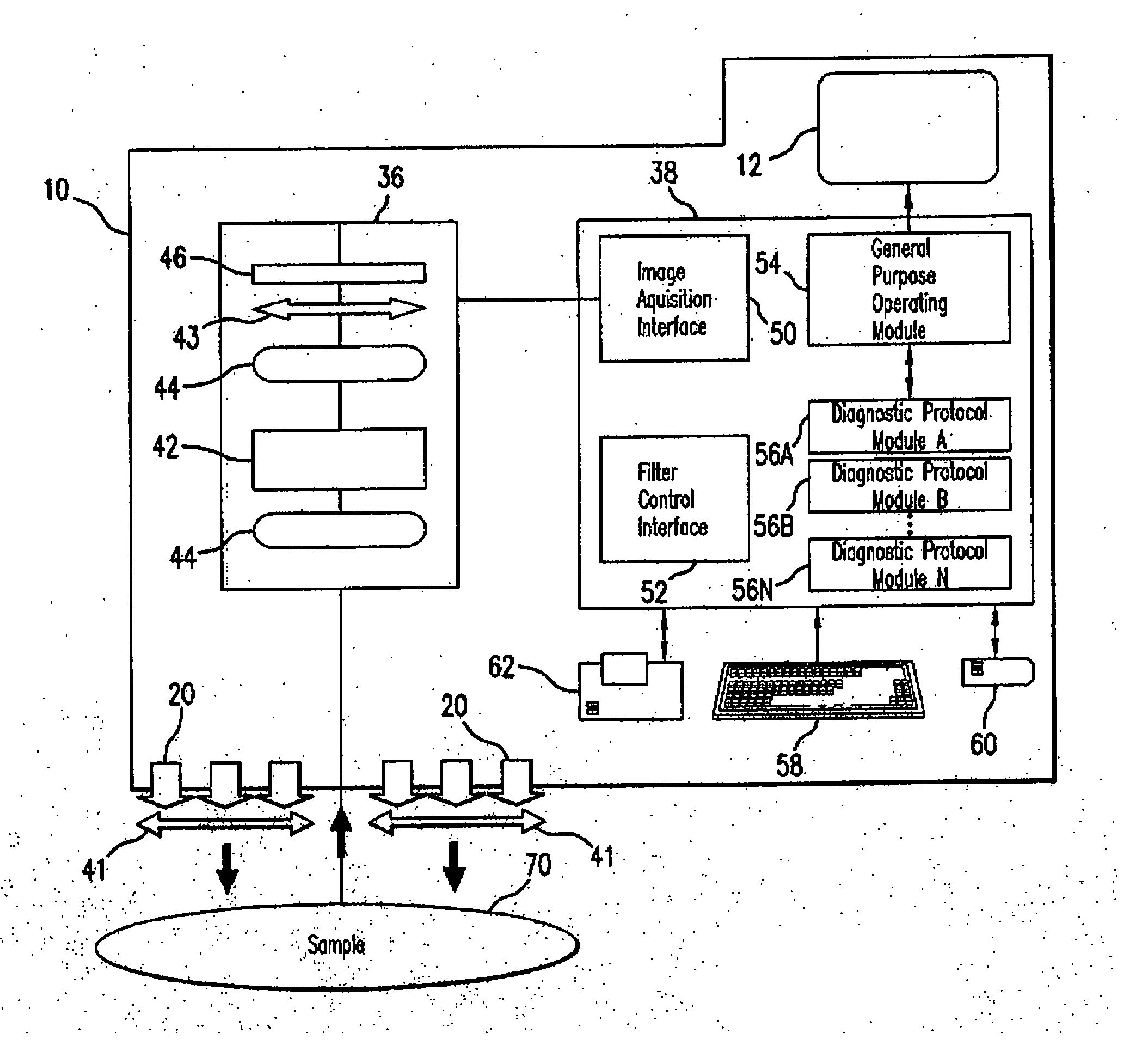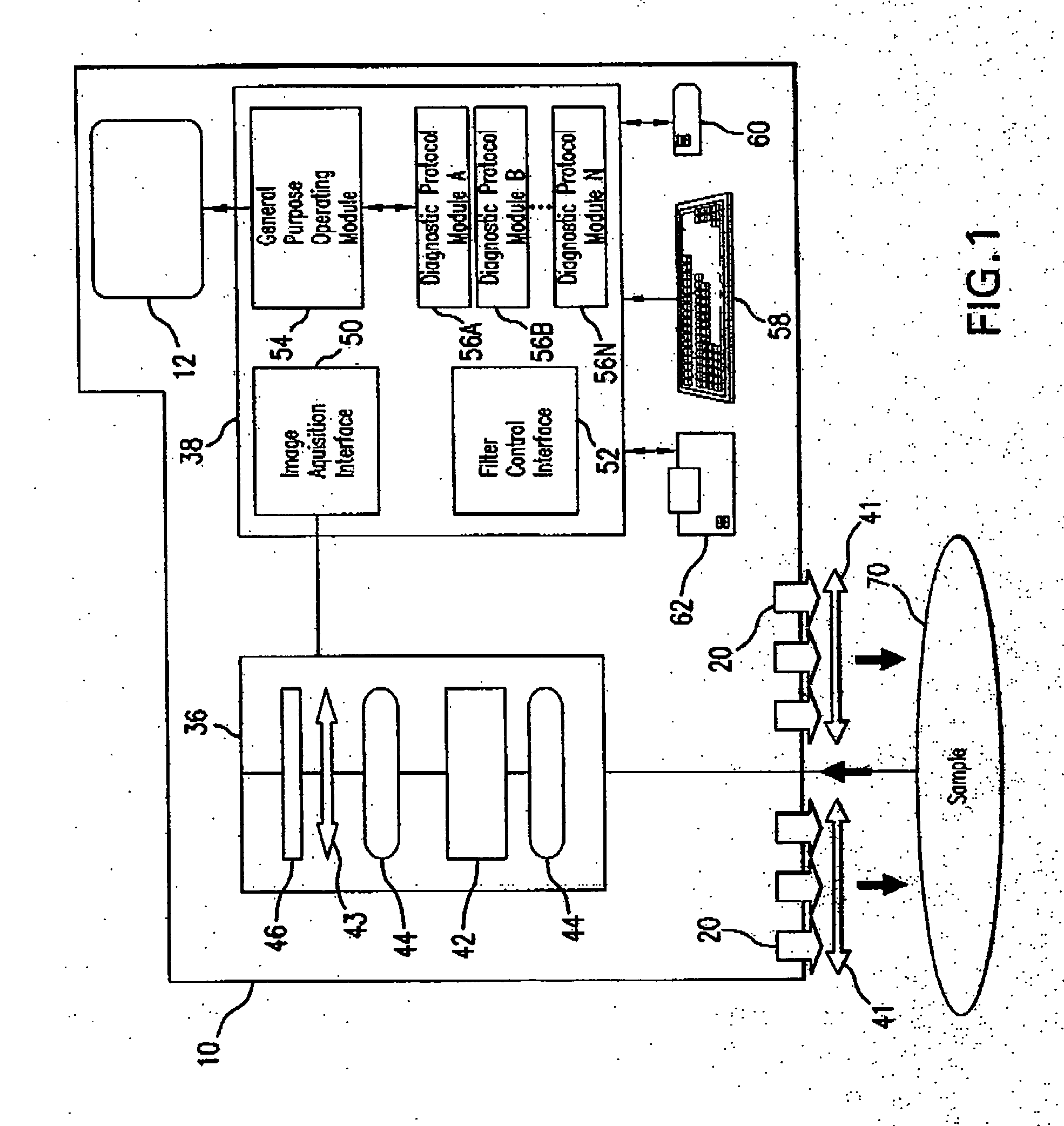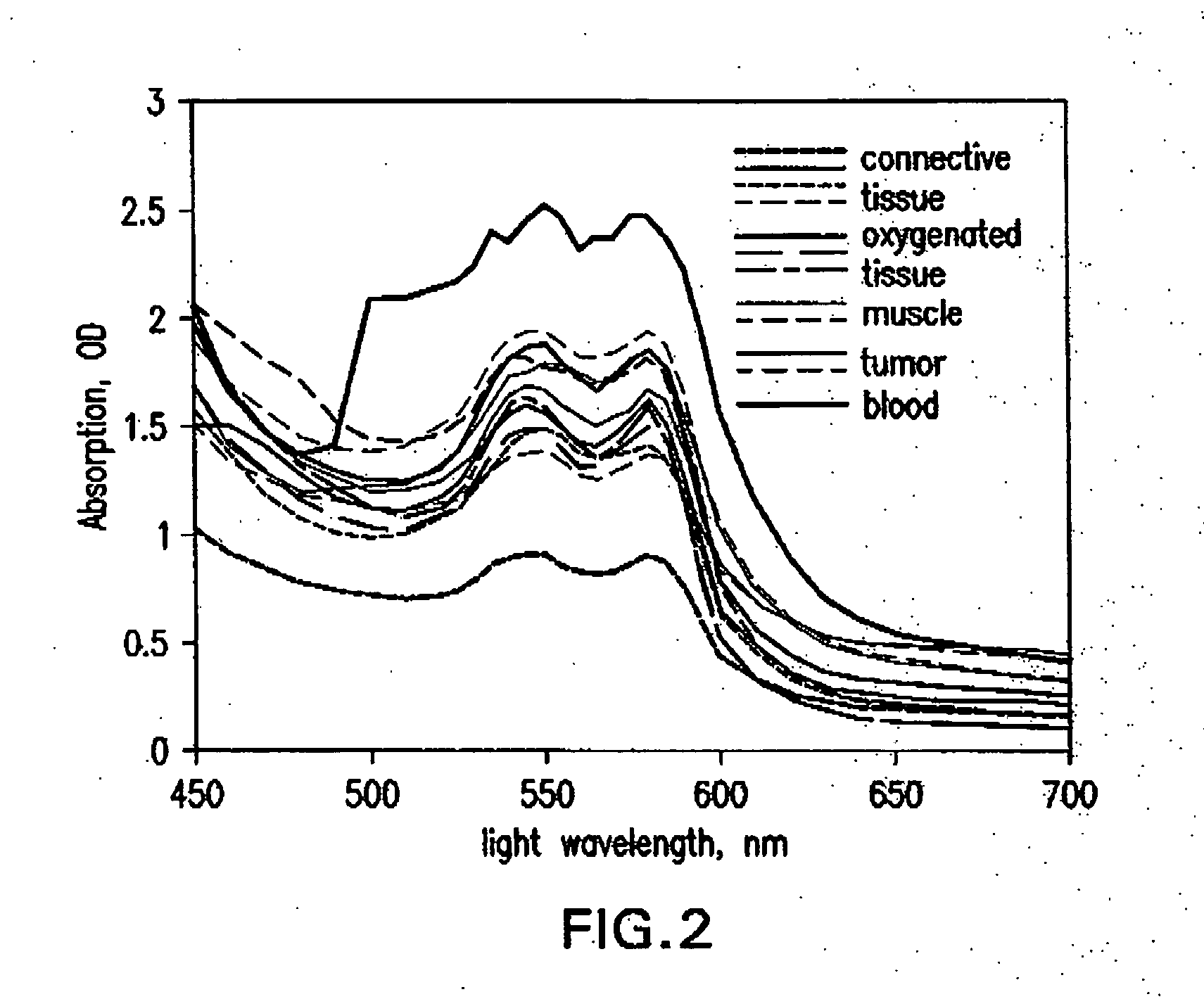Medical hyperspectral imaging for evaluation of tissue and tumor
a hyperspectral imaging and tumor technology, applied in the field of hyperspectral imaging analysis, can solve the problems of not translating into, contributing to significant local morbidity, cost of care and anxiety,
- Summary
- Abstract
- Description
- Claims
- Application Information
AI Technical Summary
Benefits of technology
Problems solved by technology
Method used
Image
Examples
Embodiment Construction
[0031] Hyperspectral imaging (HSI) is a novel method of “imaging spectroscopy” that generates a map of a region of interest based on local chemical composition. HSI has been used in non-medical applications including satellite investigation to indicate areas of chemical weapons production and to assess the condition of agricultural fields. HSI has recently been applied to the investigation of physiologic and pathologic changes in living tissue in animal and human studies to provide information as to the health or disease of tissue that is otherwise unavailable. MHSI has been shown to accurately predict viability and survival of tissue deprived of adequate perfusion, and to differentiate diseased tissue (e.g. tumor) and growth due to cancerous angiogenesis in a rat model system of breast cancer.
[0032] HSI is a remote sensing technology in which a 2-dimensional image is created having spectral data inherent in each pixel. These stacks of images comprise ...
PUM
 Login to View More
Login to View More Abstract
Description
Claims
Application Information
 Login to View More
Login to View More - R&D
- Intellectual Property
- Life Sciences
- Materials
- Tech Scout
- Unparalleled Data Quality
- Higher Quality Content
- 60% Fewer Hallucinations
Browse by: Latest US Patents, China's latest patents, Technical Efficacy Thesaurus, Application Domain, Technology Topic, Popular Technical Reports.
© 2025 PatSnap. All rights reserved.Legal|Privacy policy|Modern Slavery Act Transparency Statement|Sitemap|About US| Contact US: help@patsnap.com



